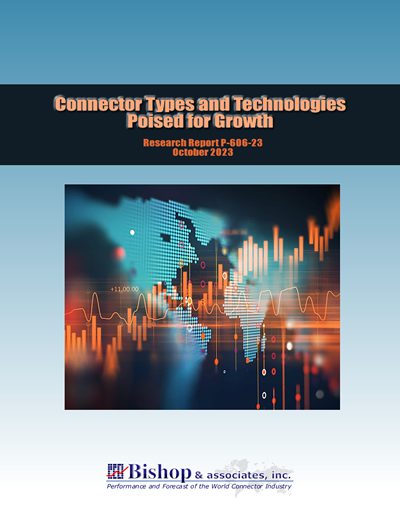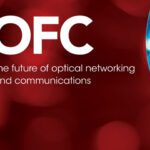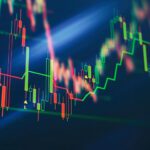New Interconnects and Advanced Technology are Moving Toward the Mainstream
Although 2023 is shaping up to be less than a stellar year for connector sales, new product development continues at a furious pace. Advanced technologies are accelerating the introduction of new interconnect architectures and devices.

The term “connectivity” has become the mantra for the expanding universe of electronic devices that pervade our world today. Delivering that connectivity in more challenging applications often requires development and application of new interconnect technology.
This imperative, which is essential to keep pace with system design requirements, remains a core value of the interconnect industry. Manufacturers have continued to invest in the development and tooling of upgraded and new connectors that support demands for faster speed, higher power, improved signal integrity, and greater packaging density.
Drivers of New Interconnect Technology
Industry 4.0, driven by advanced sensors, is spawning entirely new classes of electronic devices that improve factory efficiency. Ruggedized electronic connectors play an increasingly critical role in the performance of the end device as well as the infrastructure that supports it. Applications such as face recognition, 5G/6G cellular communication, location awareness, and artificial intelligence provide greatly enhanced interaction with our devices, while creating new vulnerabilities for hackers to target.
Demand for increased internet bandwidth and capacity is driving massive expansion of hyperscale data centers. Prototype 112 Gb/s PAM4 channels have been demonstrated while 224 Gb/s channels have become the next, much more challenging goal. A trend toward server disaggregation separates storage, operating system, and compute resources into modular subsystems, which increases system efficiency and flexibility while increasing the need for high-speed interconnects.
The bump in personal computer sales stimulated by the pandemic work-from-home movement has waned as employers try to entice or mandate return to the office. On the other hand, the wars in Ukraine and the Middle East are depleting the U.S. stockpile of weapons, which should translate to increased demand in the military equipment and arms market for several years.
The explosive growth of artificial intelligence (AI) is one of several technologies that are driving the expansion and upgrading of data centers. Preparing for the adoption of 51.2 Tb switches is part of this overhaul. Demand for increased capacity, speed, reduced latency, and power consumption is also being balanced by the need for high-reliability and the ability to “future proof” the network.
What New Interconnect Technologies are Being Released?
Advanced technologies are accelerating the introduction of new interconnect architectures and devices. For example, traditional direct-attach passive copper cables are being augmented with active copper cables that incorporate frequency selective amplification, retiming, linear equalization, or compensation, which increase both signal integrity and reach. The result is smaller, more flexible conductors, and reduced cable bulk. Continuing improvements in cable materials and construction are enabling higher performance twinaxial cable assemblies that are being used to replace embedded copper traces in a PCB.
QSFP-DD and OSFP continue to be the leading pluggable optical transceiver formats, each of which offer significant advantages in terms of module size, thermal management, reach, and power consumption. Coherent pluggables address demand for increased efficiency and capacity of each fiber. A much-delayed Multi-Source Agreement (MSA) specification 1.0 for a third contender, OSFP-XD (extra density) pluggable was recently released with the objective of supporting I/O panel densities required by 51.2 Tb/s switches. By doubling the number of lanes from 8 to 16, and the ability to run at 100 and potentially 200 Gb/s per lane, this new module may be capable of supporting next-generation 102.4 Tb switches.
Linear drive optics have entered the field of pluggables and potentially offers reduced power, heat, latency, and cost while delivering higher reliability. This technology is a work in progress but introduces another solution to supporting next-generation application specific Integrated circuits (ASICs) typically found in data center switches.
Fiber optic cable and connectors continue to evolve with the introduction of more durable fiber as well as advanced multicore and hollow core optical cable. New multi-fiber connectors terminate up to 64 fibers and are packaged in a small form factor profile that addresses looming face plate congestion. Many of these new connectors utilize expanded beam technology that mitigates the effect of contamination at the interface.
Billions of dollars are being invested in the development of level 5 autonomous transportation. A combination of powerful on-board computation, high-speed, low latency interconnect, multiple types of advanced sensors and software that can recognize and adjust to the innumerable possible scenarios that human drivers face every day will be required.
Despite differing opinions on the advantages of co-packaged optics as a solution to next generation 51.2 Tb/s and 102.4 Tb/s switches, tremendous resources are being applied to bring this technology to production-ready status. The Optical Internetworking Forum (OIF) has been spearheading the effort to create standards supporting this technology and have proposed a design for an external laser source and recently published a specification for a 3.2 Tb module. Issues including fiber management, power consumption, thermal management, establishment of a multi-vendor eco system, and field repairability are being explored. Co-package optics is being seen as the long-term solution to supporting several generations of future ASICs and switches. Chiplets are becoming a viable module packaging option.
System architectures that pack more circuits and consume more power in smaller spaces are creating thermal management challenges. A single data center rack can host 6000 cores and consume 40 kW of power. The surge in power consumption and resulting heat have reached unsustainable rates. Connectors that offer reduced electrical resistance and integrated thermal conduction features can be part of the solution. Hyperscale data centers have begun consideration of liquid cooling that is highly efficient but will require major infrastructure and system architecture changes.
Hyperscalers are driving development of interconnect technologies required to support anticipated network performance well into the future. Lessons learned and capabilities achieved will provide the product development roadmap for the electronic connector industry as well.
Bishop & Associates has recently published a new Market Research report titled “Connector Types and Technologies Poised for Growth.” This nearly 300-page report identifies 13 connector types that are expected to experience exceptional growth at a rate well beyond the general connector market. This report also includes a delineation of 15 technologies that will offer opportunities and challenges to the electronic connector industry.
Some of the issues addressed in this report include:
1) Will connectors defined by an industry standard or specification show exceptional growth?
2) What technical advances in fiber optic cables and connectors are bringing fiber closer to cost parity with copper interconnects?
3) Will new material technology change the way connectors are designed, fabricated, and utilized?
4) What applications have identified fiber as the most cost and performance efficient interface?
5) What technology gaps exist which must be addressed to satisfy next-generation equipment interconnect requirements?
6) What potentially disruptive technologies may impact connector design and utilization over the next five years?
Each chapter includes background information on the connector type as well as the factors that we anticipate will be driving rapid growth. A list of major suppliers and market statistics are provided for 2022, along with forecasts for 2023 through 2028, along with a five-year CAGR.
Each of the targeted technologies includes a brief description, potential applications, and projections of how the technology may impact the electronic equipment market in coming years.
See Bob Hult’s archive and follow the development of new technologies.
Like this article? Check out our other Technology Trends and Industry News articles, our Industrial Market Page, and our 2023 Article Archives.
Subscribe to our weekly e-newsletters, follow us on LinkedIn, Twitter, and Facebook, and check out our eBook archives for more applicable, expert-informed connectivity content.
- Optics Outpace Copper at OFC 2024 - April 16, 2024
- Digital Lighting Enhances your Theatrical Experience - March 5, 2024
- DesignCon 2024 in Review - February 13, 2024






